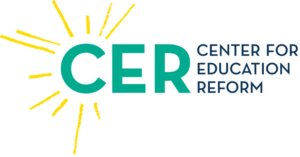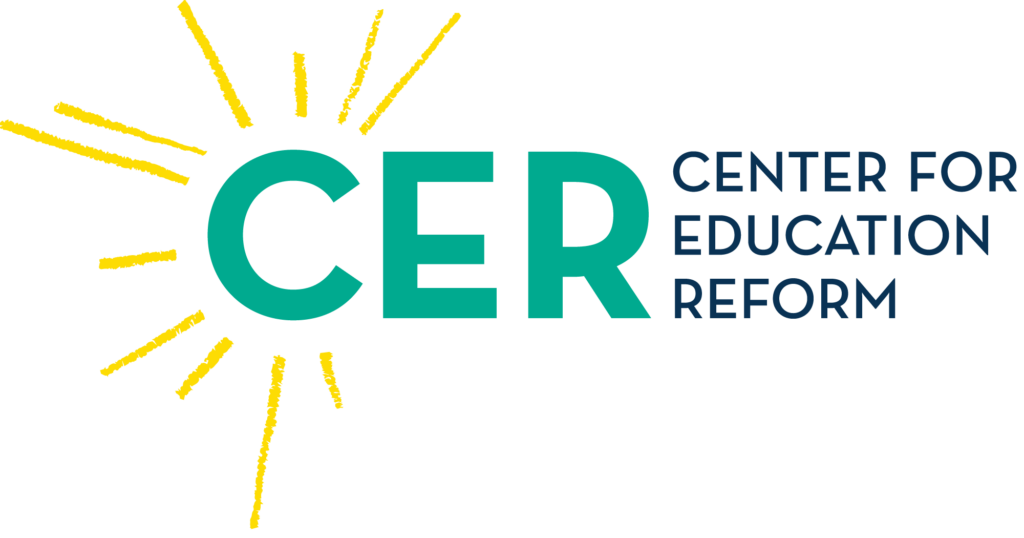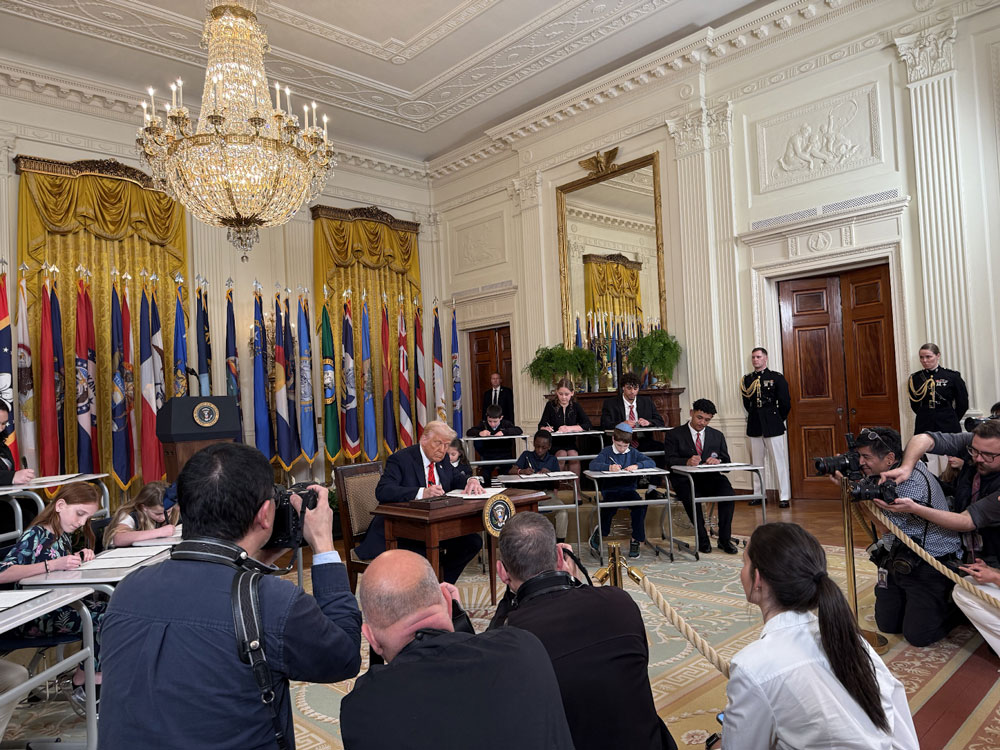The Role of Federal Education Policy
Too often, federal policy has become synonymous with centralized control—creating rigid mandates, bureaucratic burdens, and one-size-fits-all approaches that stifle innovation and ignore the diverse needs of families and schools. That’s why it is essential to both understand and shape how the federal government interacts with education at every level: to ensure that it supports, rather than hinders the actions of the states and communities, the autonomy of their educators, the power of parents to drive their own children’s education and, and the innovation necessary for meaningful education improvement.
Latest Trump Administration Actions on Empowering States
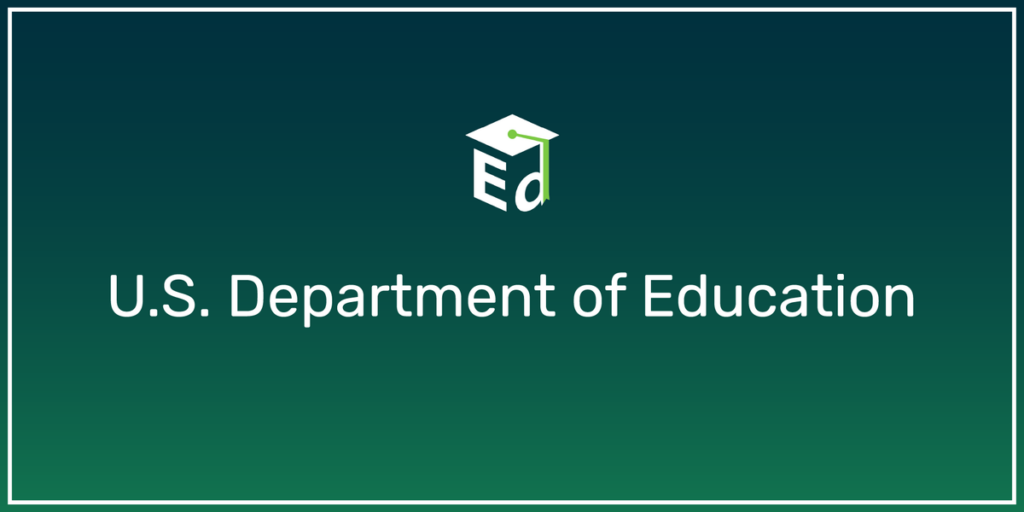
US Department of Education Advances School Choice Guidance - August 21, 2025
The U.S. Department of Education issued further guidance on how states can ensure equitable access for students in private schools to federally funded services.
The new Department of Education guidance clarifies how students in private schools can access federally funded supports under Title I-A, such as tutoring, counseling, and summer programs. While federal dollars do not go directly to private schools, local school districts are required to ensure eligible private school students receive services, reflecting the principle that funding follows students rather than institutions.
Why This Matters:
Federal law (ESEA, dating back to 1965) says education funding benefits students, not schools. Because private school families also pay federal taxes, their children are entitled to certain federally funded supports. The administration is pushing districts to work more closely with private schools so families see those benefits more directly.
This is part of a bigger strategy in the Trump Administration, and the fourth piece of guidance under Linda McMahon’s Department of Education aimed at broadening choice:
March: Encouraged Title I funds for parent-selected options like tutoring, advanced courses, dual enrollment, and career training. May: Urged stronger definitions of unsafe schools, so more students could transfer to safer or alternative options. June: Advised states to use Title I funds for families in chronically low-performing schools, again stressing transfers and personalized supports. Now (August): Ensuring private school students get full access to federally funded services.
This move is part of a broader Trump administration strategy to expand school choice, building on earlier guidance encouraging states to use federal funds for parent-selected services, transfer options for unsafe schools, and supports for students in low-performing schools. Together, these steps underscore the administration’s push to maximize parental choice, redirect federal resources toward students’ individual needs, and ultimately return greater authority over education to the states.
The Long View on Using Executive Orders To Improve Education For All Students
President Trump’s landmark efforts to change the trajectory of federal education policy through executive orders has friends and foes alike. There has never been as ambitious – or as speedy – an effort to unravel what has become an obtrusive education bureaucracy. The Trump Administration’s mission is clear – respect the authority of states accorded them by our Constitution. For education reform supporters, such an approach is an opportunity. For education system supporters, it’s a threat.
Below are selected analysis and recommendations about the long-term, and potentially transformational impact of these efforts on student outcomes and education systems at large.
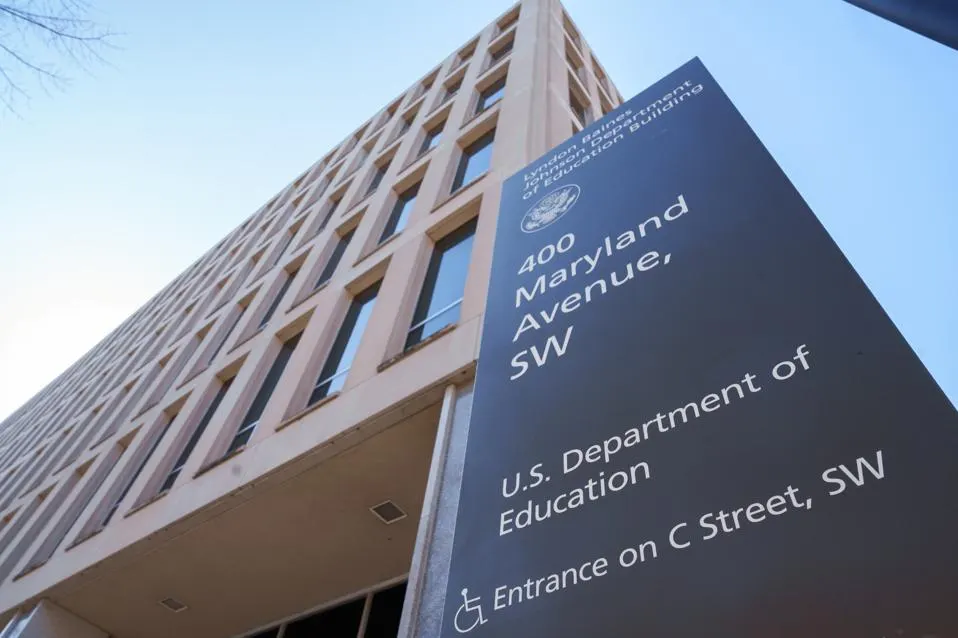
What To Know About Abolishing the Department of Education
Eliminate or radically reduce the U.S. Department of Education. Lean into calls to abolish the Department are growing, driven by concerns over declining student achievement, excessive bureaucracy, and federal overreach.
Prioritize School Choice at the Federal Level. Reorient federal policy to support state-led choice programs, including charter schools and microschools, and remove federal barriers that disadvantage non-traditional schools in areas like food service and special education funding.
Reform Federal Funding Mechanisms
- Redirect USDA lunch subsidies to follow students rather than districts.
- Revise IDEA funding so that students with disabilities in choice settings receive equitable support.
- Direct Title I funds straight to schools based on actual disadvantaged student populations.
Reorganize federal postsecondary education functions. Transfer the Office of Postsecondary Education and related funding duties to the U.S. Treasury, eliminating politically driven and inefficient federal subsidies and oversight mechanisms like accreditation.
Decentralize and reassign categorical programs. Evaluate which programs should exist, and transfer some (e.g., IDEA) to agencies like Health and Human Services to ensure better alignment with student needs.
Reduce the Department’s footprint. Following reallocation and restructuring, evaluate whether the Department should remain a Cabinet-level agency or be scaled back to a leaner research and support office.
Secretary Linda McMahon’s Vision for the Department of Education
Tackling Bureaucracy in Education. Nearly 47% of educational funding is consumed by regulatory compliance, she says, reducing the effectiveness of teachers and limiting innovation. The Department’s new strategy involves actively dismantling unnecessary regulations and streamlining departmental processes to empower educators and entrepreneurs.
Communicating Policy Clarity. Amid public concern about cuts to vital educational programs, McMahon emphasized the administration’s commitment to sustaining support for initiatives like special education and Pell Grants. She stressed the need for consistent, transparent communication to correct misperceptions and alleviate fears.
Supporting Choice and Best Practices. Although education policy is largely state-driven, McMahon believes the federal government can play a pivotal role in highlighting and disseminating successful educational models. By touring states and evaluating various school types—public, private, charter, and magnet—she aims to inspire competitive improvement and broader adoption of effective practices.
Bridging Workforce and Education. Challenging the false dichotomy between college and vocational paths, McMahon advocates for a hybrid model integrating apprenticeships, dual-credit courses, and industry partnerships. This strategy prepares students for the workforce while allowing them to earn credentials that align with both higher education and skilled trades.
Redefining Student Loan Management. Recognizing inefficiencies in the current student loan system, McMahon is exploring options to transfer oversight from the Department of Education to agencies like the Treasury or the Small Business Administration. These changes aim to improve loan quality, collection, and support for borrowers.
Stay in the Loop
Follow along here or on X @edreform for frequent updates on actions from Washington.
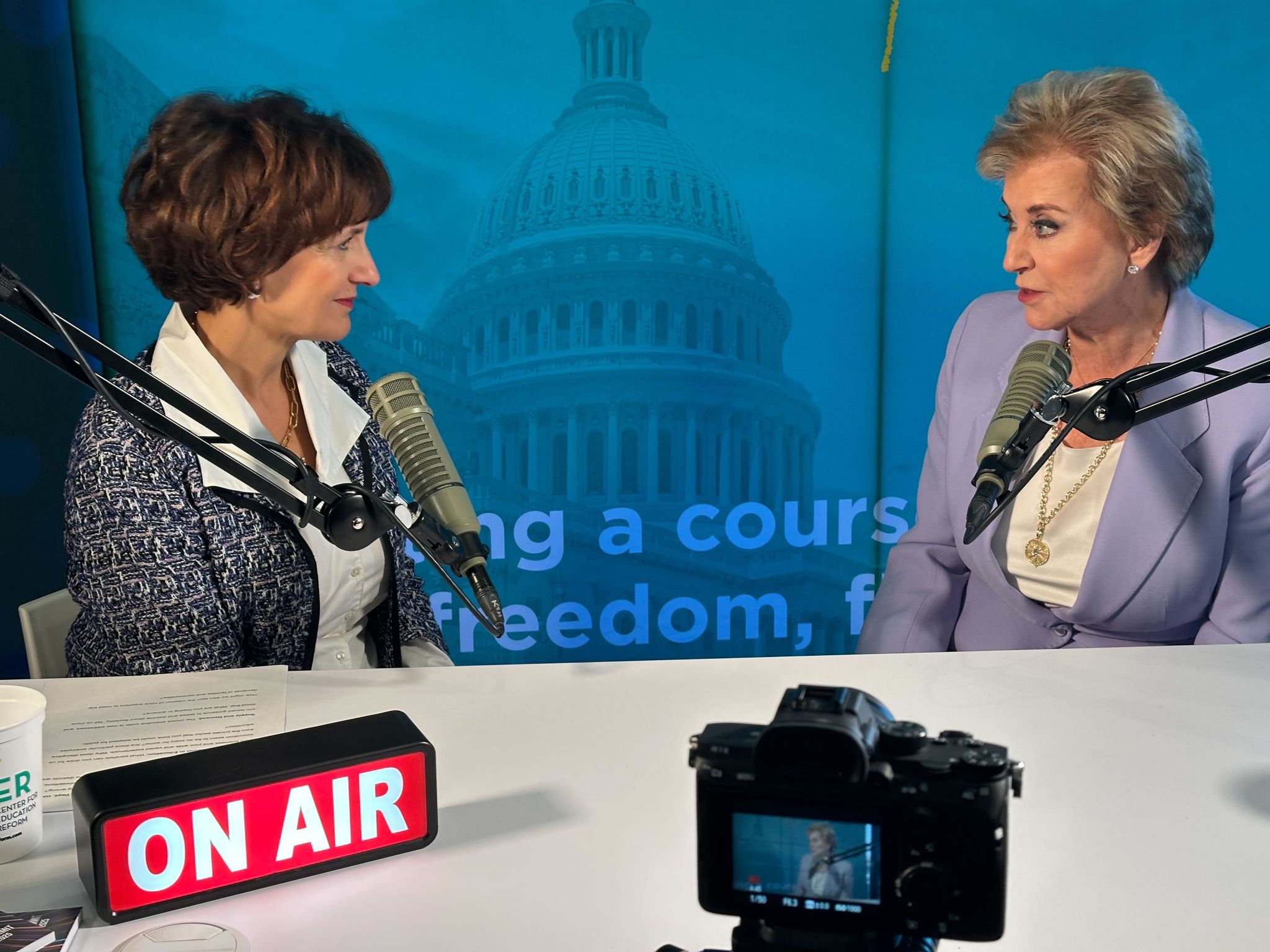

In a recent interview at the ASU+GSV Summit, U.S. Secretary of Education Linda McMahon outlined a vision for federal engagement in education in America. The approach of pushing back power to the states involves rolling back regulations, prioritizing the fusion of education with and for student career ambitions and workforce needs, and fostering innovation and effectiveness across all educational institutions.
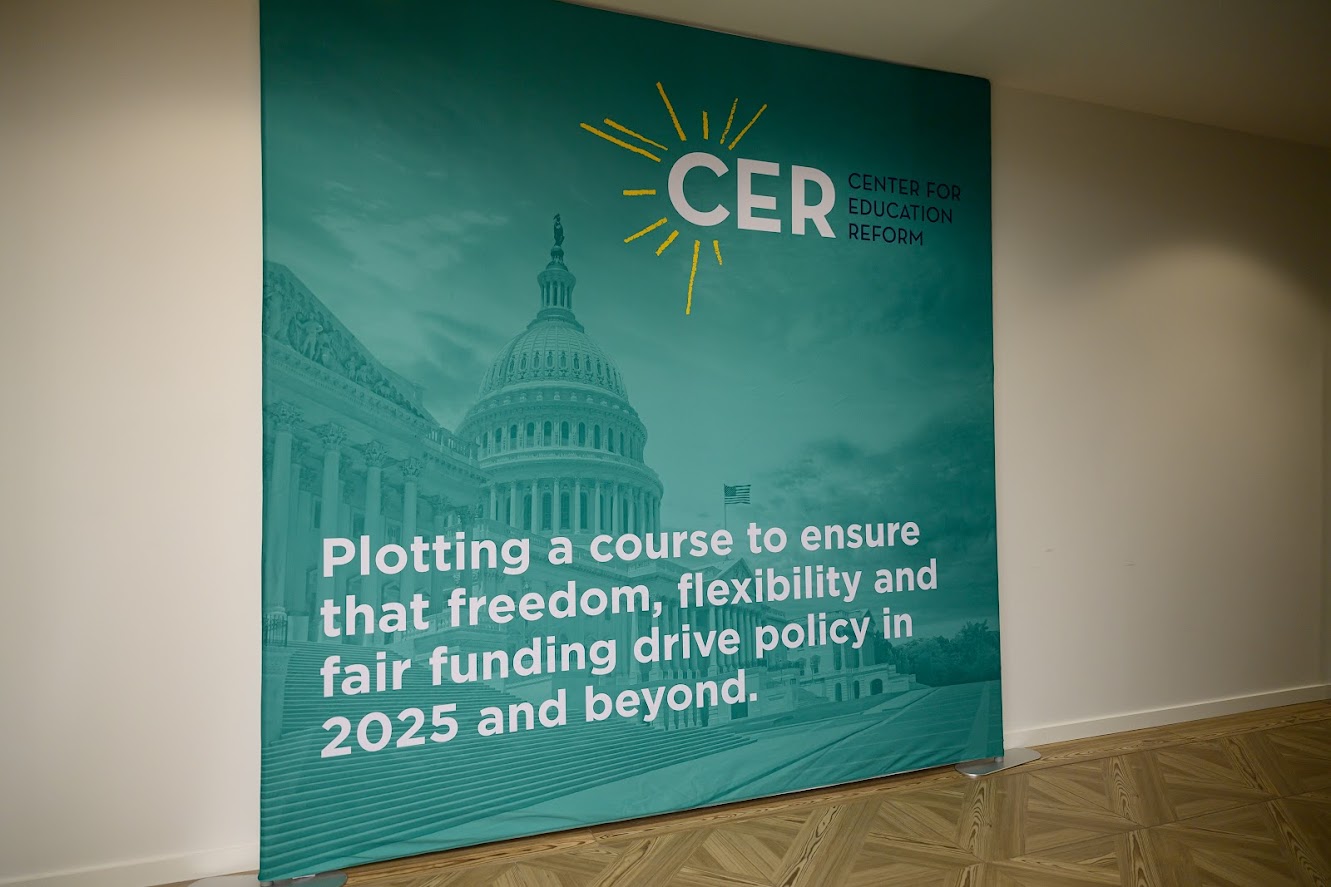
Execute a “Three Rs” Reform Strategy via Executive Orders
- Reallocate: Redirect $20 million in discretionary funds can expand the D.C. Opportunity Scholarship Program beyond its stagnant funding.
- Reverse: Eliminating Biden-era Charter School Program regulations that enable local officials to block charter growth using subjective criteria.
- Roll-Out: Establish a White House Initiative on Education Innovation and Opportunity for Everyone, replacing fragmented subgroup initiatives and focused on removing federal barriers to education reform.
Recommendations for the New Administration
Investigate and Enforce Janus v. AFSCME. Federal agencies actively communicate and enforce teachers’ rights under the 2018 Janus decision, which prohibits mandatory union dues for public employees. Curbing union practices that mislead or pressure teachers will free educators to act more independently and embrace innovative teaching approaches.
Enforce Constitutionality of School Choice. The Departments of Justice and Education uphold Supreme Court decisions (Espinoza v. Montana and Carson v. Makin) which affirm the constitutionality of school choice. Challenging the enforcement of Blaine Amendments in states where they are used to block religious school funding will open up additional funding for new schools, and place state courts on notice regarding their obligation to follow federal precedent.
Evaluate Federal Equity in School Funding. Launching an inquiry into why state-authorized educational alternatives—charter, private, and microschools—can explore why federal dollars often don’t go to these models and primarily to traditional public schools. Advocate for funding equity across all school types to eliminate discriminatory funding practices.
To learn more about state and local policy, click here to dive into the CER Policy Library and bookmark News & Analysis.
Federal Support for Expanded Choice and Excellence
CER approaches federal education policy with the conviction that the government’s role in K-12 education is to provide data, highlight notable state and local milestones, foster innovation and support efforts to empower parents. Within that vision, several policy subtopics emerge as critical to expanding educational opportunity and driving innovation. Among these subtopics – notable in two executive orders – are some of the most consequential levers at the federal level and the issues where CER and its 200 plus partners around the nation representing more than 14 million students are and will continue to be most engaged.
Expanding Educational Freedom for Families
On January 29, 2025, President Donald J. Trump signed an executive order titled “Expanding Educational Freedom and Opportunity for Families,” aiming to enhance school choice across the United States. The order addresses concerns over low academic proficiency—citing that 70% of 8th graders are below proficient in reading and 72% in math—and the financial strain caused by geographically based school assignments. It promotes the expansion of K-12 scholarship programs, allowing families to select the best educational settings for their children, including private and faith-based schools, thereby fostering competition among public schools.
To implement this vision, the executive order directs several federal departments to take specific actions:
- The Department of Education is tasked with issuing guidance on utilizing federal funds to support educational choice initiatives and prioritizing such programs in discretionary grants.
- The Departments of Labor and Education are to review their grant programs and recommend ways to expand education freedom.
- Additionally, the Department of Health and Human Services will provide guidance on using block grants to support families choosing educational alternatives.
- The Departments of Defense and the Interior are instructed to develop plans enabling military-connected families and those eligible for Bureau of Indian Education schools to use federal funds for schools of their choice.
Leveraging AI to Transform Education
On April 23, 2025, President Donald J. Trump signed an executive order titled “Advancing Artificial Intelligence Education for American Youth,” aiming to position the United States as a global leader in AI by integrating AI education into the national curriculum. By fostering AI literacy from kindergarten through higher education, the initiative seeks to demystify AI technologies, spark creativity, and prepare students for emerging career opportunities in the order establishes the White House Task Force on Artificial Intelligence Education, chaired by the Director of the Office of Science and Technology Policy and comprising members from various federal departments, including Education, Labor, and Energy. The task force is charged with coordinating efforts across agencies to promote AI literacy, develop educator training programs, and encourage public-private partnerships that support AI education initiatives. Additionally, the executive order introduces the “Presidential AI Challenge,” a nationwide competition designed to recognize and incentivize innovative AI applications by students and educators. The initiative also calls for the Department of Labor to create AI-related apprenticeships, ensuring that lifelong learners have access to resources necessary for adapting to the evolving technological landscape.

Promoting Sustainable, Transformational, Outstanding, and Permissionless Education
With more freedom to develop and implement personalized, 21st Century tools for America’s students, education leaders can help unlock the key to education excellence. Thousands of models exist across all education sectors and approaches that demonstrate the power of freedom and flexibility to deliver results. CER builds roadmaps for and amplifies the work of those working to do precisely that. To see a microcosm of such exemplary models of success, go to YassPrize.org.
